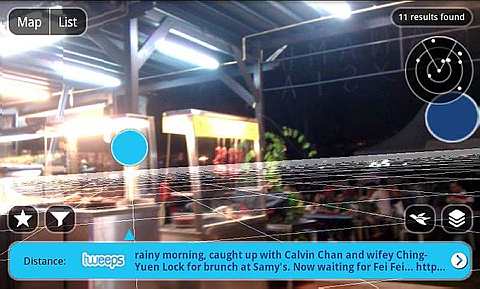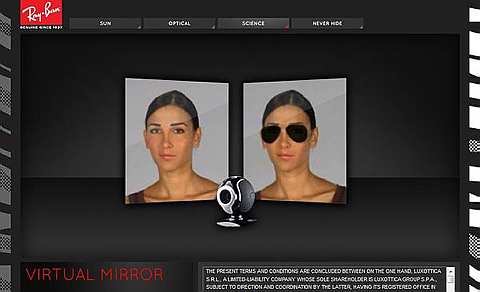DID you watch the scene in Iron Man when Tony Stark finally put on his suit and pulled down its visor?

The visor helped him see little controls and bubbles of information, telling him where and how far away his enemies were and what weapons they were carrying.
Or Robocop, if you’re a little more old school. Targets lighting up in his view as ”Hostile” and each one of them would be classified as minimal threat to everyone’s favourite cyborg cop.
Now, tell me you didn’t watch those sequences and go: ”Cool!” Tell me you didn’t secretly wish in your heart that you could have a helmet or a visor that could just do exactly that. (Of course, if you genuinely couldn’t care less; congratulations, you’ve passed the test of non-geekiness. Go reward yourself by doing some push-ups, or something.)
For the rest of us still here though, the great news is that kind of technology is closer than we think, and it will change our lives.
It’s called Augmented Reality, and it works by overlaying a view of the world around you with icons or text to give you more information about what you’re looking at.
The most common application of augmented reality today combines the camera, GPS chip, accelerometer and wireless network of your phone to deliver the experience to you via your cellphone’s screen.
But it does much more than just provide text-book style, static information. Thanks to the ubiquity of mobile Internet, augmented reality apps are able to deliver real-time data of who’s tweeting in your vicinity and where they are, directions to the nearest landmarks, edited by people who live in your city and much more.
Two top apps that deliver this experience today are Layar (www.layar.com) and the Wikitude (www.wikitude.org).

Layar's available on the Android and iPhone platforms and features both free and paid ''layers'' you can add on.
What you get when you fire up the Layar app is a view through the lenses of your camera, just as if you were going to snap a shot.
However, overlaid on this view are bubbles indicating information relevant to the layer you’ve loaded.
Loading the 3DTweet layer shows the people tweeting near you. Loading the Malaysia Points of Interests layer will make landmarks and user-submitted points of interests pop up on your phone’s screen. Do a 360 degree spin on your left foot and you will see the landmarks position on your cellphone’s screen follow suit.
Of course, the coolest real-world demonstration of augmented reality technology yet is Layar’s collaboration with Disney for a layer called Mouse Reality (http://mousereality.com).
This really clever layer makes a really intuitive guide to the magical kingdom by highlighting where all the rides, restaurants and attractions are through your phone. And, if you needed more information, each point of interest can be tapped to reveal more information about the ride.
Wikitude, available on the iPhone, Symbian and Android, is described as the World Browser. Like Layar, Wikitude works with your phone’s camera to show you additional bits of information when you point your camera at stuff around you.
Instead of layers, Wikitude asks you to select the ”worlds” you’d like to see through the lense of your phone.
Of course, selecting too many ”worlds” might overcrowd your phone’s screen, so you might want to limit them to just five or six.
The great thing about Layar and Wikitude is that both apps have open APIs (application programming interface), meaning anyone with the right technical know-how can create their own layer on Layar or world on Wikitude.
But there’s no stopping the creativity here. What about, for example, a layer that connects with Facebook and shows you where all your contacts are? Too creepy? Or perhaps a more helpful layer could be one that shows you all the ”available” taxis nearby and features a button to help book them and direct them to your location?
But not all augmented reality needs to from your phone, however.
Rayban has found a way to make good use of your PC’s webcam to let you try on their selection of shades virtually.
We’re at the tip of the iceberg now with augmented reality right now. There’s much more we can do, and like I said earlier on in this articles, it will change your life.
Having said all that, we’re not Iron Man just yet. But until we get there, why not check out the augmented reality app that let’s you pretend to be Iron Man at www.iamironman2.com.
wishes for an augmented reality app that can calculate calories for food he points his camera at. To help with his diet of course. Catch him online at www.davidlian.com.


Tell us what you think!